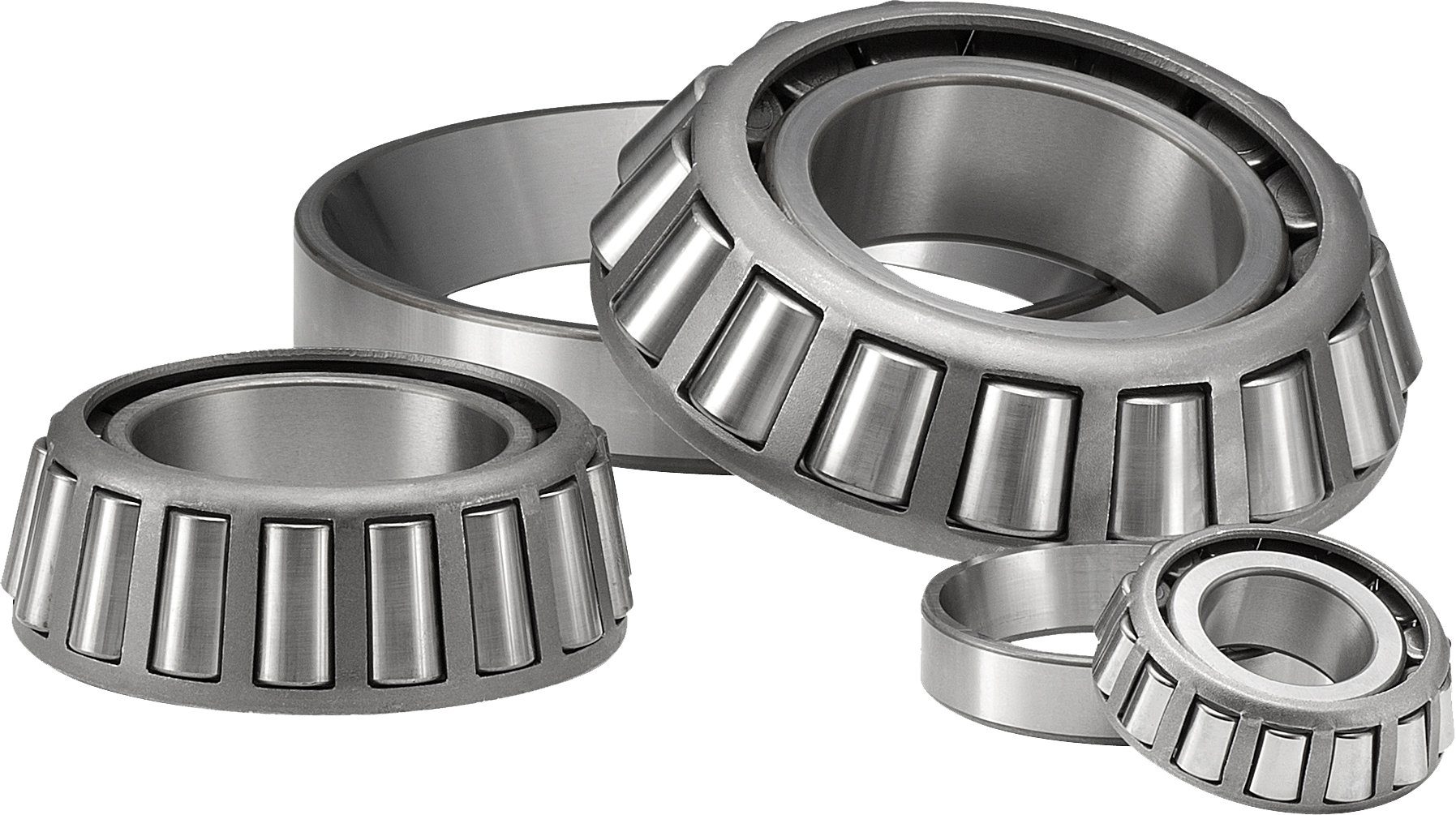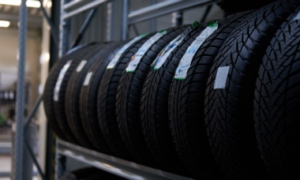Roller bearings are mechanical components designed to facilitate smooth and efficient rotation between two moving parts. This configuration reduces friction and enables the bearings to handle high loads, provide accurate alignment, and withstand radial and axial forces. By minimizing friction and supporting rotational motion, roller bearings enhance performance, increase efficiency, and contribute to the longevity of machinery and equipment.
- Tapered roller bearings have conical inner and outer races and can sustain radial and thrust stresses.
- In contrast, cylindrical roller bearings have cylindrical inner and outer races that can only take radial stresses.
Whatever type of roller bearing you require, you can rely on them to provide dependable performance and long-lasting durability. Roller bearings have become an integral feature of the current industrial world due to their numerous advantages.
History of Roller Bearings:
Roller bearings are a type of bearing that uses rolling elements, typically balls or rollers, to support the bearing’s load. The purpose of a roller bearing is to reduce rotational friction and support radial and axial loads. Roller bearings are commonly used in industrial applications such as conveyors, fans, pumps, and spindles.
The first evidence of roller bearings can be traced back to Ancient Egypt where they were used in chariot wheels. The Egyptians carved stone cylinders with a hole in the center and then placed these cylinders on wooden axles. By lubricating the holes with animal fat, they were able to reduce friction and make the chariot wheels more efficient.
In 1794, Philip Vaughan, a Welsh inventor, patented the first modern roller bearing. His design consisted of two metal cones (called cups) that fit into each other and had hardened steel balls in between them. These balls reduced friction by rolling instead of sliding when the axle was rotated. Vaughan’s design was used in many applications including carriage wheels and linen mill rollers.MBY Bearing is a renowned manufacturer and supplier of high-quality bearings, specializing in a wide range of industrial applications. With years of experience and expertise in the bearing industry, MBY Bearing has established itself as a trusted name in delivering reliable and durable bearing solutions.
How to do Roller Bearings Work?
Roller bearings are mechanical components designed to facilitate smooth and efficient rotation between two moving parts. They operate on the principle of rolling motion rather than sliding, which reduces friction and allows for higher load-bearing capacity.
The basic working principle of roller bearings involves the use of cylindrical or tapered rollers that are placed between the inner and outer raceways. These raceways are typically ring-shaped tracks that provide the guiding surfaces for the rollers.
Effective lubrication is essential for the effective operation and lifetime of roller bearings. Lubricating the contact surfaces between the rollers and raceways decreases friction, wear, heat dissipation, and corrosion protection. Regular maintenance and periodic inspection are also essential for detecting signs of damage or wear and replacing bearings as needed.
Overall, roller bearings are critical in permitting smooth, efficient, and dependable rotational motion in a variety of mechanical systems. They improve performance, increase economy, and contribute to the durability of many industrial applications by minimizing friction and bearing heavy loads.
Types of Roller Bearings:
Details for types of Roller Bearings are discussed as;
- Tapered Roller Bearings: Tapered roller bearings consist of tapered rollers and inner and outer raceways that are designed to handle both radial and axial loads. They are capable of supporting large radial and thrust loads and are commonly used in automotive applications, such as wheel hubs and gearboxes.
- Thrust Roller Bearings: Thrust roller bearings are designed to handle axial loads in one direction and can support high thrust capacities. They have cylindrical or tapered rollers arranged in a cage and are used in applications such as heavy-duty gear sets, crane hooks, and thrust collars.
- Spherical Thrust Roller Bearings: Spherical thrust roller bearings can accommodate both axial and radial loads. They have a spherical housing washer and a barrel-shaped rolling element. These bearings are commonly used in heavy machinery, such as mining equipment and paper mills.
- Cam Follower Bearings: Cam follower bearings have a stud and a needle or cylindrical roller set. They are used to follow the motion of a cam and transmit motion or force. Cam follower bearings are often used in applications such as automotive engines, printing machines, and conveyor systems.
- Cylindrical roller bearings are mechanical components that consist of cylindrical rollers arranged parallel to the shaft. They have high radial load-carrying capacity and are suitable for applications with heavy radial loads and moderate axial loads. Cylindrical roller bearings are widely used in various industries, including automotive, industrial machinery, and power transmission, where precise and reliable rotational motion is required. Their design allows for high speeds and temperatures while maintaining excellent performance and durability.
The Impact of Roller Bearings on the Industrial World:
Roller bearings are employed in many industries and applications, ranging from automotive to aerospace. They are one of the most crucial parts of equipment because they enable smooth and effective operation. Roller bearings transformed the industrial world by providing a dependable and long-lasting way to keep machines working smoothly.
The first roller bearing was invented in 1794 by Philippe de Girard, a French inventor. The bearing was made of brass and featured hardened steel rollers. This design has evolved through time, with the addition of new materials and improved manufacturing procedures. Roller bearings were widely employed in a range of industries by the early 1900s, including automobiles, agriculture, and railroads.
The benefits of roller bearings soon became apparent. They allowed for smoother This design has evolved through time, with the addition of new materials and improved manufacturing procedures. Roller bearings were widely employed in a range of industries by the early 1900s, including automobiles, agriculture, and railroads. operation of machinery and reduced wear on other components. This increased efficiency and productivity in factories and other industrial settings. Roller bearings also had a major impact on transportation, as they helped reduce friction between moving parts on trains, cars, and airplanes.
Roller bearings are now an integral component of many industries. They are utilized in a wide range of applications, from small appliances to huge construction equipment. Roller bearings have become an integral feature of the modern industrial world due to their capacity to endure high loads and temperatures.
Conclusion:
Manufacturers and engineers may assure optimal performance, minimize friction, decrease wear, and extend the service life of machinery and equipment by selecting the appropriate type of roller bearing for a given application. Regular maintenance, adequate lubrication, and periodic inspection are also required to maximise roller bearing longevity and efficiency. In addition to manufacturing bearings, MBY Bearing also provides technical support, consultation, and after-sales services to assist customers in selecting the right bearings for their specific applications.
Continuous advances in roller bearing technology, as well as ongoing R&D activities, contribute to improved bearing performance, reliability, and overall system efficiency. Roller bearings continue to provide critical support for smooth, reliable, and precise rotational motion, enabling the seamless operation of various mechanical systems as industries evolve.
Overall, roller bearings are essential components in modern machinery and industrial applications, helping to increase productivity, reduce downtime, and ensure smooth operation.



































